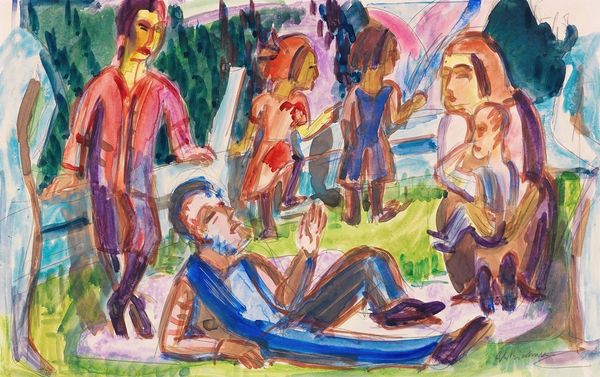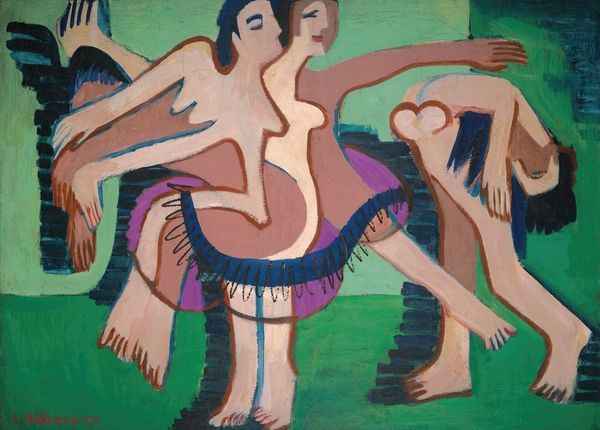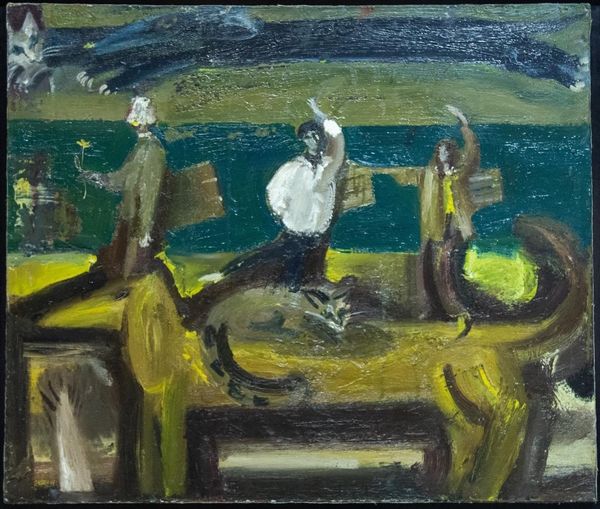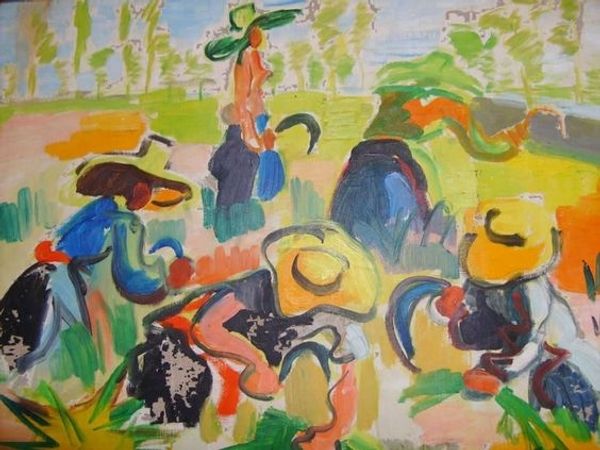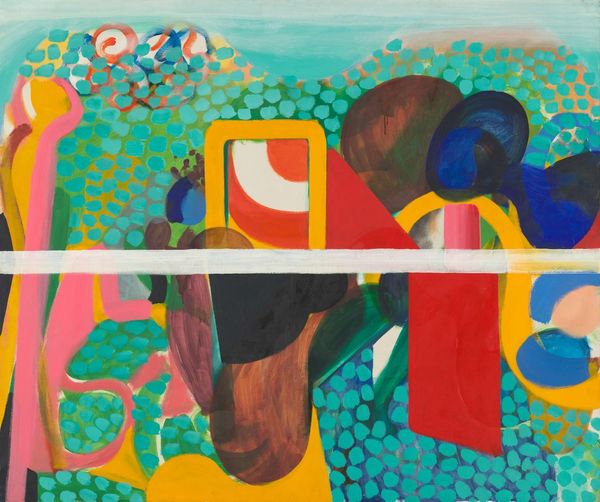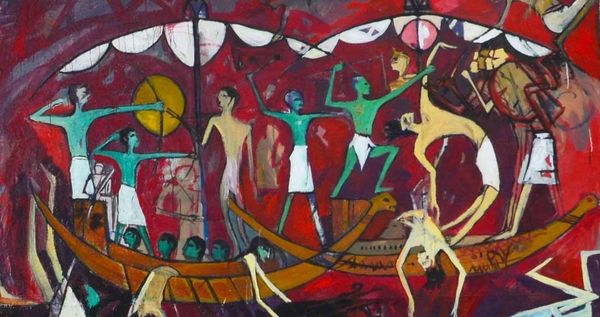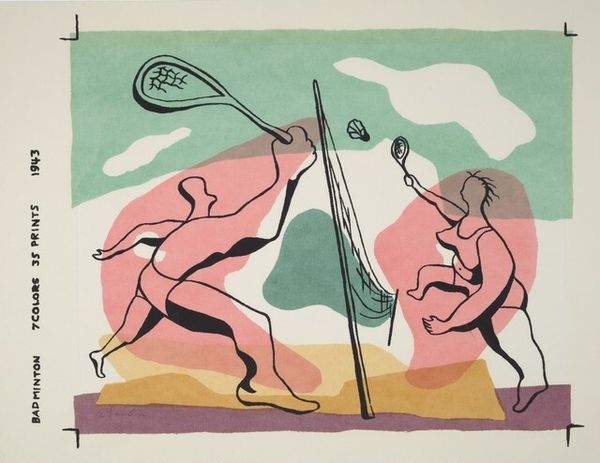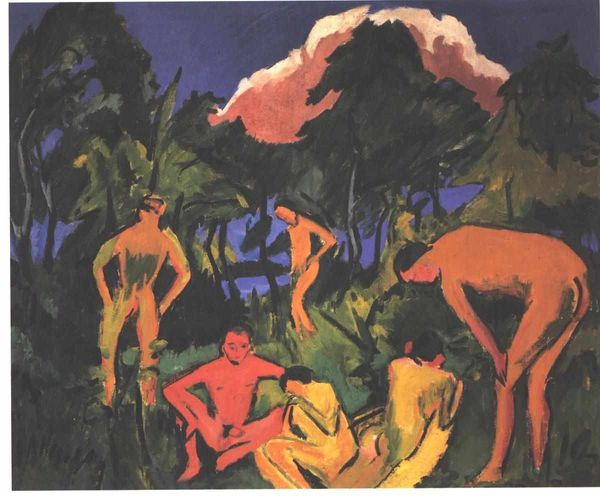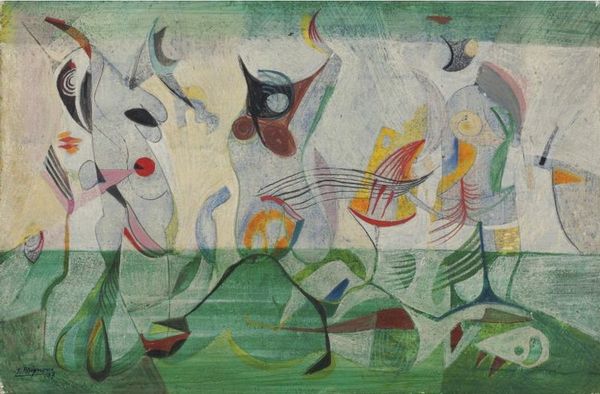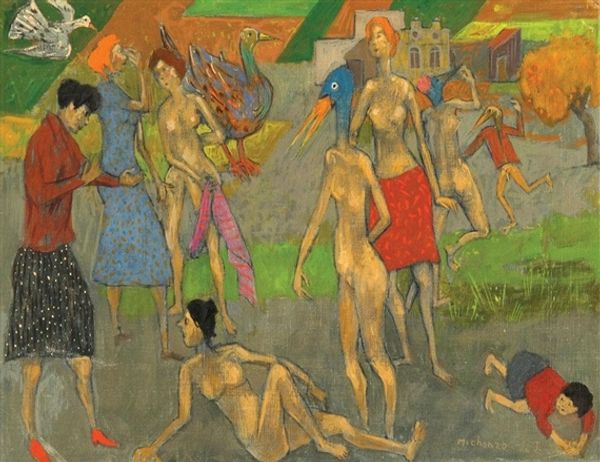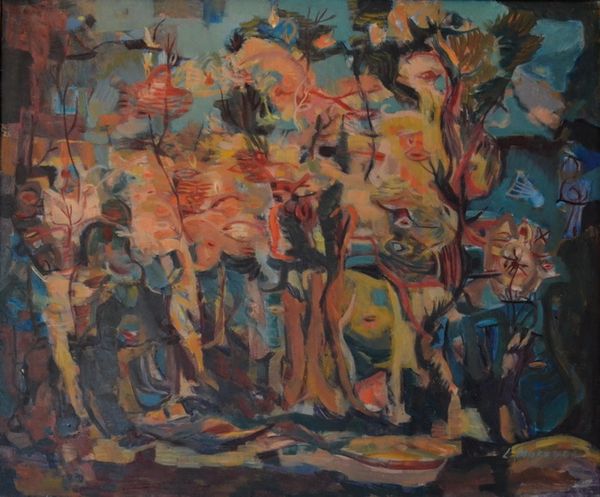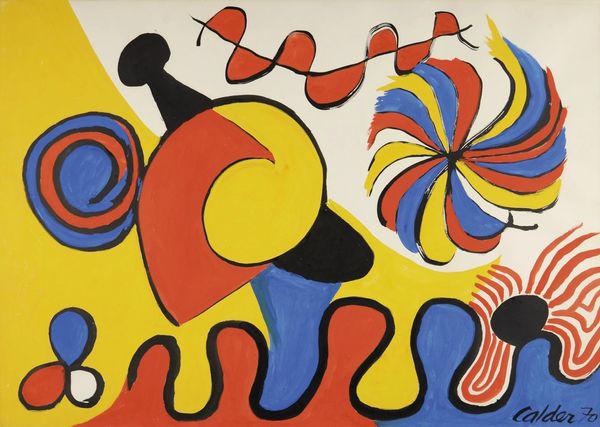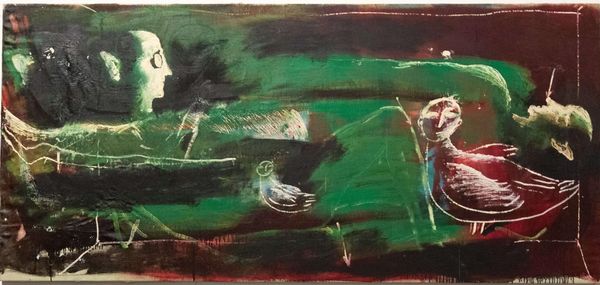
Copyright: Hélène de Beauvoir,Fair Use
Hélène de Beauvoir's 'Moissonneuse Au Maroc' is a scene rendered with striking, bold lines and a somewhat muted palette of greens, pinks, and blues; it feels both grounded and dreamlike. The application is direct, like she’s carving out the shapes with the brush. Looking closely, you’ll notice how the paint sits on the canvas, not too thick, but present—evidence of a hand moving deliberately. The figures are defined by these decisive outlines, creating an interplay between solid form and open space. It's in the bent figure in the foreground that I see the painting's core; the heavy purple outline against the pink, the way she’s captured the curve of the back and the determined angle of the arms. There is a real sense of physical labour portrayed with these simple choices of colour and line. You can see echoes of Gauguin’s interest in capturing the essence of a place and its people, not through perfect representation but through an emotional, almost spiritual connection. Beauvoir invites us to understand her world as one of constant exchange and reinterpretation.
Comments
No comments
Be the first to comment and join the conversation on the ultimate creative platform.
